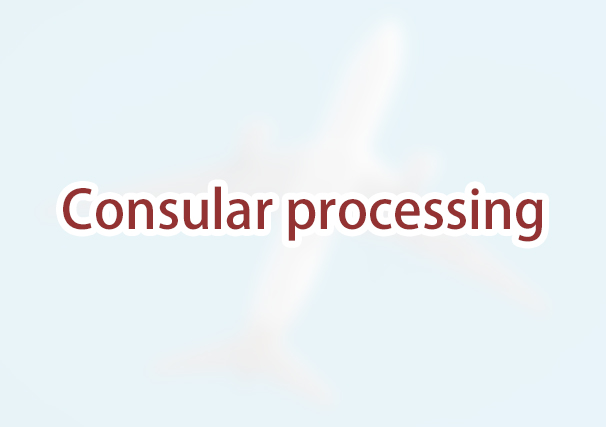
Question: I currently live in China, and my U.S. citizen wife filed an I-130 petition for me. Should I remain in China to wait for an immigrant visa, or should I apply for a tourist visa and finish my green card application in the U.S.? What is the difference between consular processing and adjusting status?
Answer: After your Form I-130 immigrant petition is approved by USCIS and an immigrant visa number is immediately available to you, there are two ways to apply for lawful permanent resident status (green card status): consular processing and adjustment of status.
If you are outside of the United States, you may apply at a U.S. consulate abroad for an immigrant visa in order to come to the United States and be admitted as a permanent resident. This process is called consular processing.
If you are already inside the United States and you entered the U.S. legally (with a visa), you might be able to apply for permanent resident status without having to return to your home country to complete processing. This process is called adjustment of status.
How can I prove that I entered the U.S. legally to qualify for adjustment of status?
When filing Form I-485, Application to Adjust Status, applicants must submit photocopies of documentation showing they were inspected by an immigration officer and admitted into the United States. The following documents can prove you entered the U.S. legally:
- Passport page with visa;
- Passport page with admission stamp; and
- Form I-94 Arrival-Departure Record.
What if I lost my passport that contained the admission stamp and the CBP website is not providing me with an electronic version of my I-94?
If you cannot produce this primary evidence, and DHS has no record of the admission or parole, USCIS will presume that you came into the United States without admission or parole.
You may file Form I-102, Application for Replacement/Initial Nonimmigrant Arrival-Departure Document to request a new I-94. You may also submit separate written statements, signed under penalty of perjury under United States law, from yourself and from any other individuals who have personal knowledge of the circumstances of your claimed admission or parole.
Any statement should explain in detail when and where you came into the United States; what travel documents you had, if any; whether you showed them to the immigration inspector; any questions the immigration inspector asked; and any other details about your claimed admission or parole.
Is there an exemption to anyone who did not enter with inspection or parole that could still qualify for adjustment of status?
Yes, the following types of applicants do NOT need to submit documentation of inspection and admission or parole:
- Asylees;
- VAWA self-petitioners;
- Special immigrant juveniles;
- T nonimmigrants applying under INA section 245(l); and
- U nonimmigrants applying under INA section 245(m).
If I have an approved petition, and an immediate visa available, but I’m not ready to proceed with my case at this time due to owning a business abroad; will my case be closed?
Immigration and Nationality Act (INA) section 203(g) states that the “Secretary of State shall terminate the registration (petition) of any alien who fails to apply for an immigrant visa within one year” of notice of visa availability.
The petition may be reinstated if, within two years of notice of visa availability, the alien establishes that the “failure to apply was for reasons beyond the alien’s control.” Therefore, if you do not respond to notices from NVC within one year you risk termination of your petition under this section of law and would lose the benefits of that petition, such as your priority date.

ImmiFree.Law is The Harrison Law Firm P.C.’s online platform to make the family immigration and naturalization process more efficient, accurate, and affordable. Baya Harrison, Esq. is an attorney licensed in New York, Florida, and California. Attorney Harrison has helped numerous individuals and families navigate the U.S. immigration process, specifically family-based petitions and naturalization.